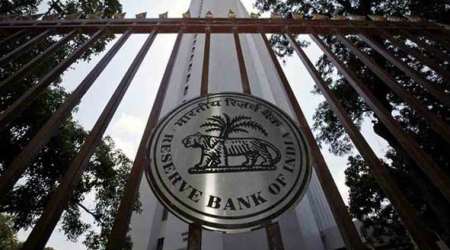 Mumbai: RBI Governor Urjit Patel during a press conference announcing the Reserve Bank of India’s monetary policy at its headquarters in Mumbai on Wednesday. PTI Photo by Mitesh Bhuvad
Mumbai: RBI Governor Urjit Patel during a press conference announcing the Reserve Bank of India’s monetary policy at its headquarters in Mumbai on Wednesday. PTI Photo by Mitesh Bhuvad
The government and the Reserve Bank of India squared off Wednesday on the issue of lowering interest rates. Hours after the Monetary Policy Committee (MPC) decided to keep the rates on hold, the Finance Ministry made it clear that there was a strong case for a substantial easing of rates. The statement by Chief Economic Advisor Arvind Subramanian came after RBI Governor Urjit Patel said that members of the MPC — the interest rate setting committee – unanimously declined to meet the Finance Ministry panel for discussions on the monetary policy a week before the monetary policy review.
“The meeting did not take place. All MPC members declined the request of the Finance Ministry for that meeting,” Patel said. Sources said senior Ministry officials had scheduled a meeting with members of the MPC on June 1, which was later declined by MPC members. Subramanian, Principal Economic Advisor Sanjeev Sanyal and the Economic Affairs Secretary were to meet the MPC members to present the government’s viewpoint on the state of the economy.
On Wednesday, the RBI left the repo rate unchanged at 6.25 per cent and the reverse repo rate at 6 per cent. The central bank also projected that inflation will remain in the 2 to 3.5 per cent range for the first half of 2017-18 and in the 3.5 to 4.5 per cent for second half. The RBI in its monetary police review also cut growth projection for current fiscal to 7.3 per cent from 7.4 per cent. The MPC decision not to change the key policy rate — the repo rate or the rate at which banks borrow from the central bank — comes in the backdrop of the pre-policy meet sought by the Ministry which was perceived by some experts as an interference in the functioning of the MPC. So far, interactions between the Finance Ministry and the RBI ahead of the monetary policy review have been limited to customary meetings between the Finance Minister and the Governor.
The Ministry has had reservations over the RBI changing its monetary policy stance from “accommodative” to “neutral” while keeping policy rates on hold in its February review. In the backdrop of falling inflation and growth in Gross Domestic Product (GDP), the Ministry is of the view that there is need for further monetary policy easing. In a statement issued Wednesday evening, Chief Economic Advisor Subramanian said that deceleration in growth and falling inflation “warrants substantial monetary policy easing”. “…At the same time, real policy rates are tight and rising, at a time of low inflation and slowing growth. Of course, the appreciating real exchange rate makes the real monetary policy conditions even tighter. In recent times, seldom have economic conditions and the outlook warranted substantial monetary policy easing.”
A senior official of the Finance Ministry told The Indian Express: “Since one month, we have had discussions with the Finance Ministry on sending the government’s views to the RBI. We were trying to fix a meeting with MPC members that did not happen ultimately. The Finance Ministry had sent written views to the RBI on interest rates before the policy and law does state that the Finance Ministry can send its views to RBI.” The RBI Act allows the government to send its views to the MPC.
The government did not specify the quantum but clearly argued that they wanted the RBI to cut rates, the official said. Going ahead, the government plans to prepare a framework for its meetings with the MPC members. “We are also discussing whether minutes of this meeting, between government officials and MPC members should be made public, on the lines of the MPC minutes being made public,” the official said.
The six-member MPC of the RBI headed by Patel was jointly formed by the government and the RBI in September 2016 to determine interest rates and make monetary policy decisions more transparent. The MPC has three external members — Chetan Ghate, Ravindra Dholakia, and Pami Dua — and three members from the RBI —Governor Patel, Deputy Governor Viral Acharya and Executive Director Michael Patra.
This was the first time when the Finance Ministry panel had formally asked to meet the MPC members ahead of the policy review to give its inputs. Earlier on May 31, Subramanian in an interview to business daily Business Standard had said the RBI Act provides for the central government to give its views to the committee and the Finance Ministry panel is just “consistent” with the law. “Remember these are inputs, we don’t pressurise them (MPC). They are free to take our views into consideration or not. We will meet them before monetary policy meetings to present our opinions,” Subramanian had said.
This is not the first time when the government and the RBI have disagreed on the issue of lowering the interest rates. Between 2008 and 2013, during the tenure of Duvvuri Subbarao, the former RBI Governor, the interest rate regime, estimate of growth and fiscal stance were the main areas of difference between the UPA government and the RBI.
Globally, a number of countries have formed monetary policy committees with the main objective of inflation targeting. In the case of Bank of England, the central bank of UK, a representative from the Treasury is allowed to sit in the monetary policy committee meetings. While the Treasury representative can discuss policy issues, he or she is not allowed to vote. The purpose is to ensure that the MPC is fully briefed on fiscal policy developments and other aspects of the government’s economic policies, and that the Chancellor is kept fully informed about monetary policy.

